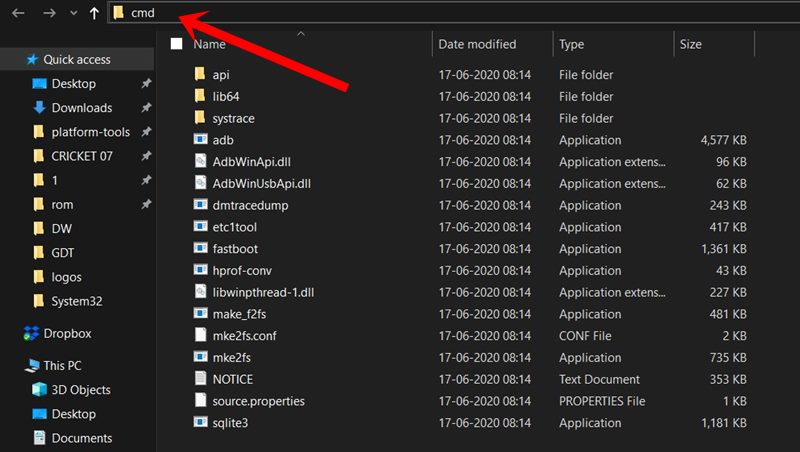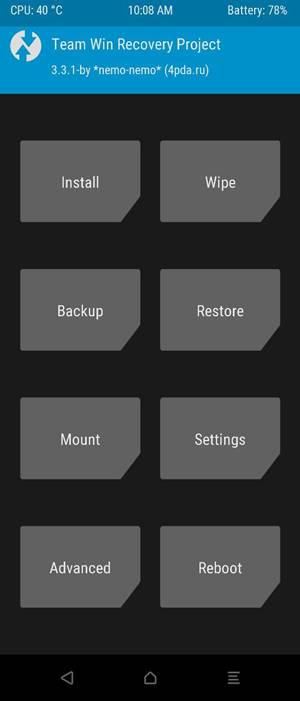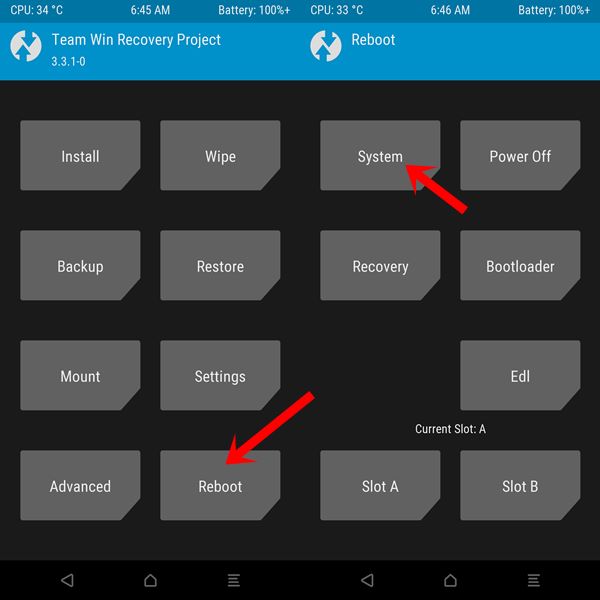On this page, we provide a step-by-step guide on how to install the unofficial Android 14 Custom ROM on the Xiaomi Poco X4 Pro 5G, codenamed “veux.” If you’re looking to install the pure version of Android 14, then you’re in the right place.
Xiaomi Poco X4 Pro 5G smartphones were launched globally at MWC 2022. The device sports a triple camera setup which houses a 108-megapixel primary camera. It is powered by a Qualcomm Snapdragon 695 SoC under the hood and runs on a 5,000mAh battery. Xiaomi Poco X4 Pro 5G came out of the box with Android 11 on top of MIUI 13.

Page Contents
Xiaomi Poco X4 Pro 5G Overview
The Poco X4 Pro 5G features a 6.67 inches AMOLED panel with a 120 Hz refresh rate. It is an FHD+ panel with a resolution of 1080 x 2400 pixels and an aspect ratio of 20:9. The screen has a peak brightness of 1200 nits. Under the hood, we get the Qualcomm Snapdragon 695 5G processor built on a 6nm manufacturing process. It is an octa-core processor with two Kryo 660 Gold cores clocked at 2.2 GHz and six Kryo 660 Silver cores clocked at 1.7 GHz. For handling the graphics-intensive tasks, we have the Adreno 619. The smartphone comes with Android 11 out of the box with MIUI 13 skin running on it.
In terms of optics, we get a triple camera setup at the rear and a single selfie camera at the front. The triple rear camera setup consists of a 108MP primary sensor paired with an f/1.9 lens, a 64MP wide sensor paired with an f/1.8 lens, and a 2MP macro sensor paired with an f/2.4 lens. The selfie camera at the front is a 16MP primary sensor paired with an f/2.5 lens. Both the front and rear camera systems are limited to 1080p video recording.
The smartphone comes in four storage options: 64GB internal storage + 6GB RAM, 128GB internal storage + 6GB RAM, 128GB internal storage + 8GB RAM, and 256GB internal storage + 8GB RAM. We also get a hybrid microSD slot for storage expansion. In terms of communications, we get Wi-Fi 802.11 a/b/g/n/ac, Bluetooth 5.1, GPS, NFC, Infrared port, FM radio, and USB Type-C 2.0. And for sensors, we get a side-mounted fingerprint sensor, accelerometer, gyro, proximity, and compass. Powering it all is a 5000 mAh battery that can be topped up quickly using a 67W power adapter. The company claims the phone goes from 0 to 70% in 22 minutes and 0 to 100% in 41 minutes. The smartphone is available in three color options: Laser Black, Laser Blue, and Poco Yellow.
Android 14 and Its Features
Android 14, Google’s fourteenth major iteration and the 21st version of its renowned operating system, was unveiled to the public on October 4. The pioneering devices graced with this fresh release were the Pixel 8 and Pixel 8 Pro, underscoring Google’s commitment to keeping its flagship devices at the technological forefront.
This latest installment boasts a plethora of enhancements and innovative features. Among the standout additions are a revamped lock screen, a more intuitive system share sheet, and a redesigned battery-saving mode. Users can also delight in the convenience of drag-and-drop capabilities during app switches, a groundbreaking Ultra HDR support for media, and the visually striking Material You-themed settings toggles. With AI-generated wallpapers and a new monochromatic theme, Android 14 not only refines functionality but also offers a refreshed aesthetic experience.
What’s Working and Known Bugs:
Whats working? Wi-Fi RIL Volte Mobile data GPS Camera Flashlight Camcorder Bluetooth Fingerprint FM radio Sound vibration Known issues ? * Hotspot may lag out when trying to turn it off
How To Install AOSP Android 14 on Poco X4 Pro 5G (veux)
As the title indicates, this article provides the necessary steps and requirements to install the AOSP Android 14 build on the Poco X4 Pro 5G (veux) model.
Before diving into the guide, please ensure you’ve met all the prerequisites listed below.
Pre-Requisites
Before we begin this procedure, I strongly recommend you create a backup of your device storage and all your files stored on your device. Moreover, following the steps mentioned in this post carefully is advised to avoid permanent damage or bricking your device.
Charge Your Phone
It’s highly recommended to charge your handset before unlocking the bootloader to avoid your device from shutting down occasionally while going through the process. Keep at least 50% of the charge or higher for a smooth operation.
Download ADB and Fastboot Binaries
You can skip this adb and fastboot part if you have already installed TWRP Recovery on your Poco X4 Pro 5G.
Using the ADB and Fastboot commands (platform-tools), you can boot your Android device into the bootloader mode (download mode), making it easy for you to proceed with further steps. ADB (Android Debug Bridge) creates a connection or bridge between the device and the computer to sideload files.
Fastboot is a more advanced command utility tool for Android devices that works with computers. You can download ADB and Fastboot Binaries (Platform-Tools).
Download Xiaomi USB Drivers
To create a strong and successful connection between a mobile device and a computer using a USB data cable, you will need a USB Driver. It is essentially a set of files that enables you to transfer files between the connected devices, flash files on the handset, and much more.
It is important to note that USB drivers can be utilized and operated by mobile devices and other external devices on a Windows computer. These include but are not limited to mice, keyboards, printers, external hard drives, speakers, and USB flash drives. If you need to download Xiaomi USB drivers, you can find them here.
Unlock the Bootloader of Your Phone:
You need to unlock the Poco X4 Pro 5G’s bootloader before installing custom ROMs.
Install TWRP Recovery:
You must install TWRP Recovery on your phone to install any custom ROM on your device. After unlocking the bootloader, follow our guide to install TWRP Recovery on your Poco X4 Pro 5G.
Download Android 14 ROM:
You will find all the Android 14 custom ROMs for your Poco X4 Pro 5G (veux) here.
| CherishOS | XDA Development Page |
| Project Matrixx V | XDA Development Page |
| crDroid 10.0 | XDA Development Page |
| Evolution X | XDA Development Page |
Download Android 14 Gapps:
Most third-party AOSP ROMs, also known as aftermarket firmware, do not include preinstalled Google apps. You can manually install Android 14 GApps with our guide.
Warning!
GetDroidTips won’t be responsible for any issue that may happen to your device if you flash it on another device and brick it. Do it at your own risk.
Instructions To Install:
- Connect your device to the PC via a USB cable. Make sure USB Debugging is enabled.
- Then head over to the platform-tools folder, type in CMD in the address bar, and hit Enter. This will launch the Command Prompt.

- Execute the below command in the CMD window or enter recovery mode using the Volume and Power button combination to boot your device to TWRP Recovery:
adb reboot recovery
- Now head to the Install section and navigate to the downloaded vendor and firmware. Perform a right swipe to flash it.
 TWRP Home
TWRP Home - If you want Google Apps as well, you need to flash it at this instance. Go to Install, select the GApps ZIP file, and perform a right swipe to flash this file.
- When that is done, you may reboot your device. Head over to Reboot and select System.

The installation of AOSP Android 14 on Poco X4 Pro 5G is complete, and your device will now boot with the newly installed OS. It’s worth noting that the first boot may take some time, and you may need to set up your device from scratch. With that, our guide to installing AOSP Android 14 on Poco X4 Pro 5G comes to an end.
Conclusion
If you want to try out the latest Android OS version on your Poco X4 Pro 5G, flashing the ported Android 14 is an option. Although it seems like the Poco X4 Pro 5G won’t receive the official Android 14 update from the manufacturer, you can still enjoy most of the features and visual treatment with this ported version. However, if you encounter any bugs or stability issues, it’s important to report them to the respective forum.
That’s it, guys. We assume this guide was helpful to you. For further queries, you can comment below.
